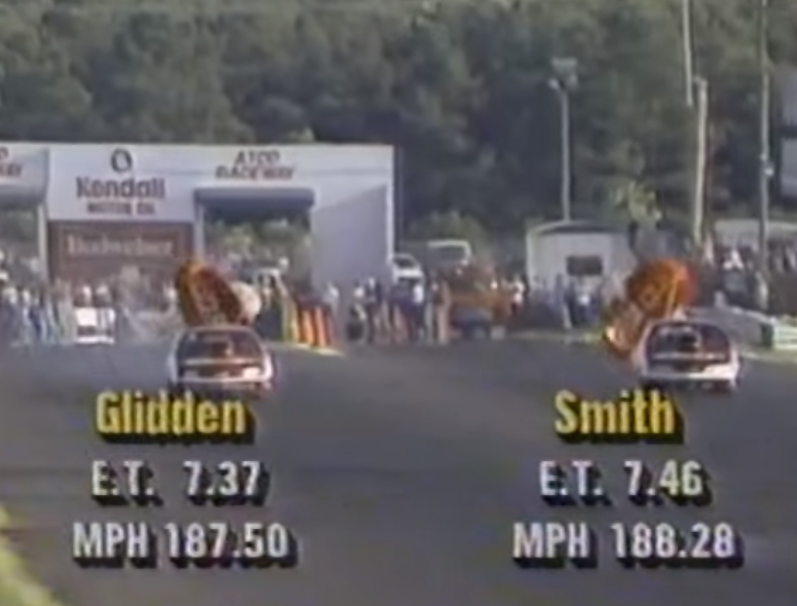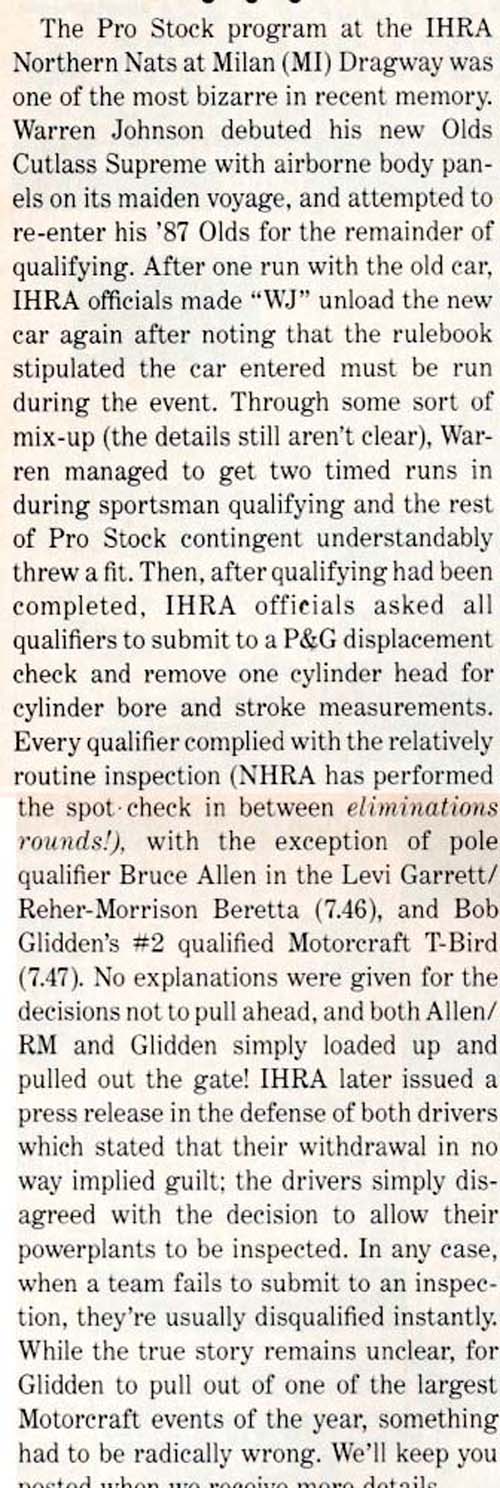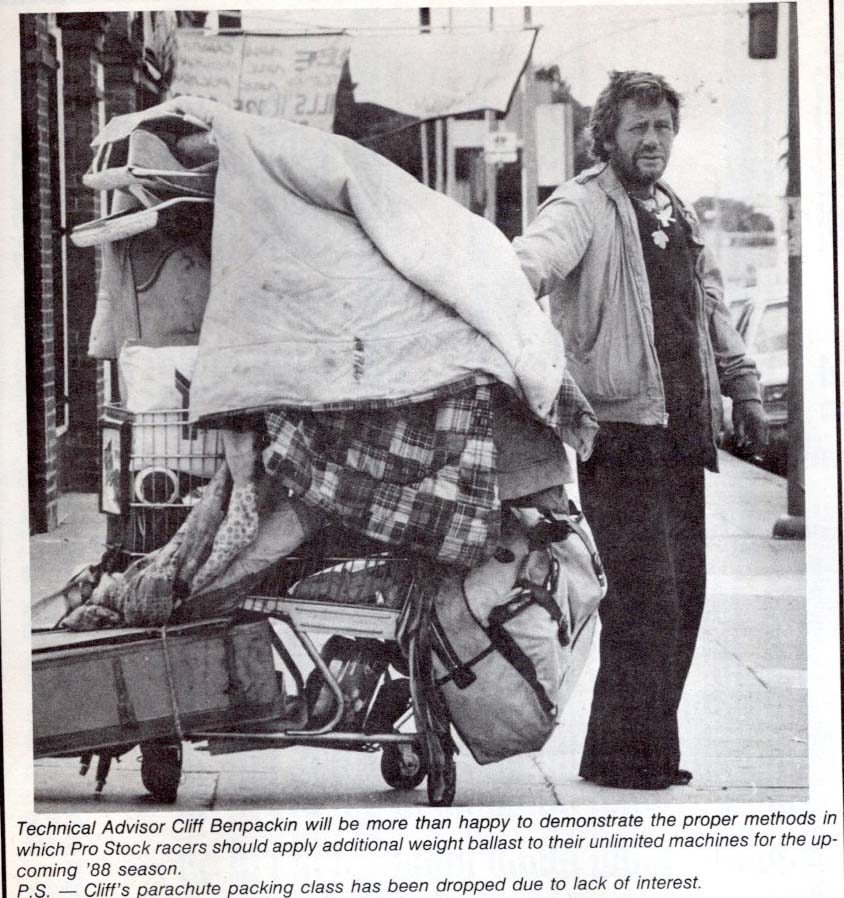THE LAST TIME A SANCTIONING BODY MIXED MOUNTAIN MOTORS WITH 500-INCH PRO STOCKERS


Sources close to the NHRA rulemaking department have said there is a plan in the works to merge mountain motor Pro Stock racing into NHRA's current pro stock format.
For those unfamiliar with mountain motor Pro Stock, in 1977 IHRA scrapped the traditional pounds per cubic inch format and developed a format where drivers could run as large of a displacement of an engine as they could fit between the fenders. The sizes were mountainous compared to the NHRA’s small-blocks thus creating the term.
The IHRA cars began to overshadow the NHRA cars media-wise by reaching the seven-second zone first, and in 1982 NHRA adopted their own version of the large displacement engines but capped their engines at 500 inches.
These same sources have also indicated NHRA will bring in a sampling of the mountain motor cars at the Chevrolet Performance U.S. Nationals in preparation for the future.
If this merger comes to pass, this will not be the first time such a move has been attempted.
However, this time it was under the IHRA sanction when the then Bristol, Tennessee-based series was a viable professional drag racing option.
Billy Meyer had just purchased the sanctioning body from Larry Carrier and was determined to go head-to-head with the giant National Hot Rod Association.
The nitro divisions were identical, save for the lack of upper echelon teams in competition.
Pro Stock was a different animal. Over in the NHRA, Pro Stock raced on the traditional 500-inch displacement formula while the IHRA lived under its “sky is the limit” mantra.
At the time, both Pro Stock programs had an abundance of participants with each drawing at least 25 cars or more at many events. Meyer desperately wanted to attract the NHRA fraternity over to his newest venture in both professional and sportsman.
Pro Stock would require a tremendous transformation for this to happen.
The IHRA's tech department went to work on a formula which would work for both the 500-inch and large displacement factory hot rod combinations. After weeks of deliberation, the IHRA declared the mountain motor cars would need to carry 250 extra pounds as the great equalizer.
Eventually, the IHRA would convert the class to the 500-inch combination and rid itself of a "good ole' country boys' version of Pro Stock, who would find a home in the Top Sportsman division, which later spawned Pro Modified..
The Mountain Motors are coming to NHRA U.S. Nationals #nhra https://t.co/nMobAo95Xg
— Competition Plus (@competitionplus) August 27, 2018

Noted drag racing historian and then IHRA announcer and ESPN pit reporter Bret Kepner was in the middle of the merger. The program in his estimation was successful.
"Surprisingly accurate from the start," Kepner recalled of the Pro Stock racing in the IHRA. "Everybody expected it to be off and require a little adjustment, but it was dead on. It was just crazy."
If the fans in the stands couldn't determine which was which, the scoreboards provided the most significant clue.
"The 500-inch cars were running about 186-187 mile per hour," Kepner explained. "The mountain motor cars were going 191-192."
The immediate argument was the mountain motor cars were sand-bagging to avoid more penalty, and the faster speeds provided the proof.
"The 500-inch guys tried to make a point that there was a discrepancy, that those cars had a ton of power much as the same way that the turbo cars are getting skeptics in NHRA Pro Mod," Kepner explained. "But as it turned out they never had an advantage."
Rickie Smith, now an established Pro Modified champion, was back then the face of mountain motor Pro Stock racing. He opened the era by winning the first three races with his mountain motor-powered, Motorcraft-sponsored Thunderbird, beating two of 500-inch racing's icons Bob Glidden and Warren Johnson.
Even though the statute of limitations would allow Smith full disclosure without penalty, he was quick to point out what he had was what the competition got.

"We ran all-out, and you could tell because every time we turned around, they were putting more weight on us," Smith declared. "That was the only way I knew to run was all out. When I say all out, we were doing all we could not to chase them down the track. Do we hold back a hundredth, or hundredth and a half or two hundredths? Back then maybe by doing that we were just to trying to make sure we got down the race track. Just trying to race smart, but not trying to hold back an advantage."
Let the record reflect the 500-inch cars won seven of the 11 scheduled events in 1988. Smith represented all of the mountain motored victories in six final rounds.
Smith believes 1988 was one of the most fun seasons he's had, and the fun stemmed from living out a dream of racing against those iconic 500-inch drag racers, many of whom had flirted with mountain motor racing earlier in the decade.
"It was definitely fun running against them because I never thought I’d have the budget, and I never did really have the budget to run NHRA right, like I could IHRA," Smith said. "So to be able to run against those guys and race against them was definitely a thrill to me and like I say, just to be able to run against Bob Glidden. Some of those people come over there to run against us at that time. It was just a good deal at that time."
Warren Johnson, a two-time IHRA world champion, returned to race IHRA in 1988, but wouldn't go as far as to say it was a homecoming of sorts, although many of his fans thought so.
"There were plenty of cars; there was no shortage of competition," Johnson, a former mountain motor Pro Stock champion. "The biggest engine I ran back in those days was a 572. I've said it many times; the IHRA is where I learned how to win races."
Johnson scored three wins in four races during the 1988 campaign.
Johnson laughs as he recalls the not always so friendly rivalry with Rickie Smith.
"Driving Rickie Smith nuts was my fondest memory," Johnson said with a laugh. "We were actually good for one another and the class. We were both out there for the same reason - to win.
"You have to give Rickie a lot of credit for what he did in the mountain motor racing. "
Billy Glidden watched the 1988 season transpire through the eyes of a crewman, and the son of a drag racing legend.
Glidden, the oldest son of Pro Stock legend Bob Glidden, was with his father as they won two of three finals they reached.
"I don’t know that Dad was a huge fan of it," explained Glidden.
This wasn't the first the elder Glidden had raced in the same category with an oddball combination, just two years earlier he lined up alongside Buddy Ingersoll, who raced a 260-inch, twin-turbocharged Buick Regal running Pro Stock.

While IHRA Ingersoll's car was banned at the end of 1986, it was clear the mountain motors would be around until at least 1989.
"The mountain motor guys didn’t have much time with the big engine and the weight adjustment, so they were slow in the front-half," Glidden explained. "They were really slow the front numbers, but with time I believe that would have slipped back around just like the turbo stuff today in Pro Modified. They keep lowering their boost numbers, but yet they keep running as quick.
"I don’t know that they would have run away, you did have the tech department staying on top of everything. I think if they would have started proving out that there would have been changes made, but it really wasn’t given much time. And then big engines turned into a whole bunch bigger than they were."
There were natural rivalries such as Glidden versus WJ and Reher-Morrison, but this all took a backseat when a 500-inch car did battle against a mountain motor vehicle.
"It was exciting to have a 500-inch engine and stick your foot up a big engine’s butt," Glidden explained. "It was really exciting when Rickie left on Dad in Ennis and Dad drove around him, that was pretty exciting.
"But you drew a line, just like Pro Mod. If you run turbos, then everybody else sucks. If you run a blower, then everybody else sucks. If you run nitrous, well good luck. There was certainly a fence between the two, and it was a war."
Smith understood in the early going the style of Pro Stock racing he cut his teeth on was living on borrowed time, and eventually would be phased out in favor of a unified 500-inch program.
Smith determined from the initial announcement of the merging he wasn't going out without a fight.
"The one thing you’re going to find out about me, I ain’t going away nowhere without a fight," Smith said. "It’s just I loved mountain motor racing, period."
Smith eventually didn't have to fight hard thanks mainly in part to a situation where leading 500-inch racers were put under scrutiny by the IHRA's tech department. Up until the IHRA Northern Nationals in Milan, Michigan, the sixth race of the season, the large displacement engine racers were the proverbial red-headed step-children.
The 500-inch cars were put under the scope after winning three races in a row and three of the 500-inch cars were ordered to tear down.
The cars were first ordered to tear down in the open, but later IHRA tech acquiesced to allow inspection within their trailers. The damage was done
Bob Glidden and David Reher of Reher-Morrison refused and withdrew from the event never to run again. The third, Warren Johnson complied, and remained in competition for the rest of the season, scoring wins at the final two events of the season.
"I don't think the IHRA really wanted the 500-inch cars over there, and they ran them off," Reher said. "We believed with Billy Meyer being NHRA-based though it was a good idea to race over there. We had run the big motor stuff a lot in the 1980s. The last race we went to, they basically told us they didn't want to see us anymore.
"They wanted us to tear down in the dirt at the scales. By that time we'd had enough and left."
Why did Johnson comply?
"I wanted the money," Johnson admitted. "Not a problem for me."

Smith, the subject of much scrutiny over the course of the season, took great joy in the teardown.
"I was tickled to death; I got a boat out of it," Smith added. "The guy from Thundercraft Boats [Jim Bryant] had been on me about buying a boat. I told him if we won the race I'd buy a boat. We won, and I did. Still have the boat today."
The boat is a reminder of one of Pro Stock's more interesting seasons, albeit in IHRA. Would he consider a mountain motor Pro Stock campaign for old times sake?
"Hell no," Smith said with a laugh. "They can have that."
In the end, Meyer ended up selling the IHRA to Jim Ruth leaving the IHRA with a mixed category which had switched directions from phasing out the mountain motors to pushing out the 500-inch Pro Stockers. In 1989, the 500-inch cars only won two races with Smith once again winning the title.
While he wouldn't consider a return, Smith said the 1988 season was an opportunity for the smaller budgeted IHRA cars to make a stand.
"I’m sure they looked down on us a little bit," Smith said. "It’s just like NHRA Pro Mod now versus PDRA let’s say. You better not look down on those guys because they’ll whoop your butt. What happened, Bobby, is there are a lot of good drivers out here that just don’t give up, whether it’s drag racing or NASCAR racing."
And thirty years ago, the group which inspired NHRA to drop pounds-per-cubic inch format for "Mountain-Motored" 500-inch racing, didn't back down.






































